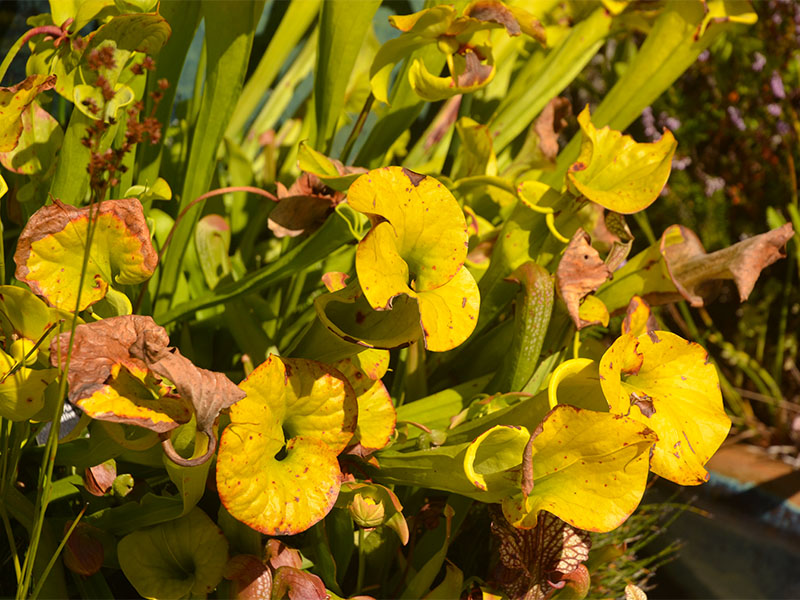| ID Characteristic | Cupped pitcher leaves. |
| Shape | Upright clumping. |
| Landscape | Bog gardens, terrariums, as a potted plant in specific conditions or as a specimen. |
| Propagation | Rhizome division or by seed. |
| Cultivation | Plant in wet, loosely-draining humus-rich acidic soil in full sun. Bog garden environments are essential. |
| Pests | Aphids, scale, mealybugs, moth larvae, leaf spot and root rot. |
| Notable Specimens | VanDusen Botanical Garden, Vancouver, British Columbia, Canada. |
| Habitat | Bogs and swampy areas. |
| Leaf Description | Modified, glaborous, variegated pitcher-shaped leaves that grow upward between 25 - 40 cm tall. Can reach heights of up to 1.2 m in the wild. White opaque fenestration emulate light windows on the sides of the leaves. While glaborous on the outside, the inside of the leaves is covered in fine hairs that point downward. The entire interior is coated in a viscous digestive liquid. |
| Flower Description | Showy closed bell-shaped flowers with pinnate outer petals and closed inner pinnate petals that house the seeds. |
| Fruit Description | Small wrinkled seeds that resemble beans. |
| Colour Description | Pitchers vary in colour from lime greens to reddish-browns. Leaf colour is somewhat membranous in its pattern. Yellow-green flowers and burgundy seeds. |
| Texture Description | Smooth. |
